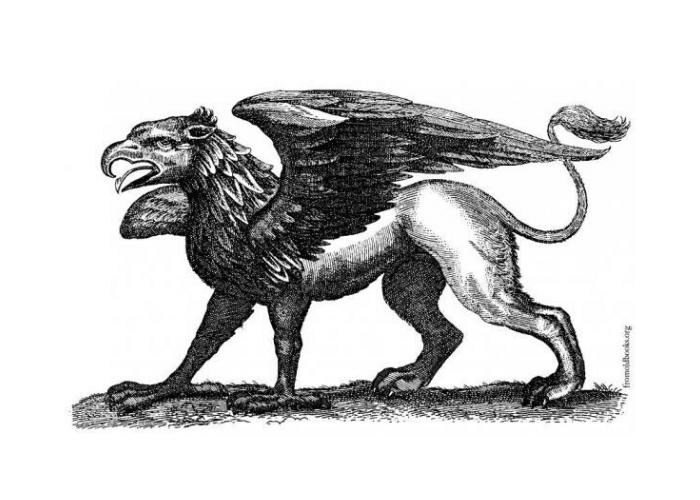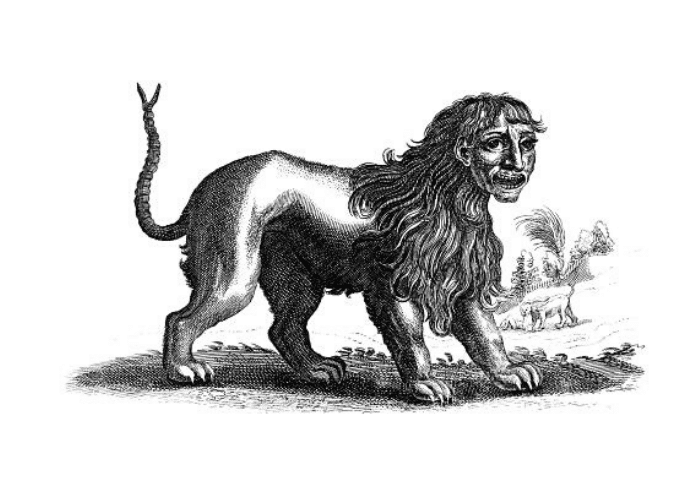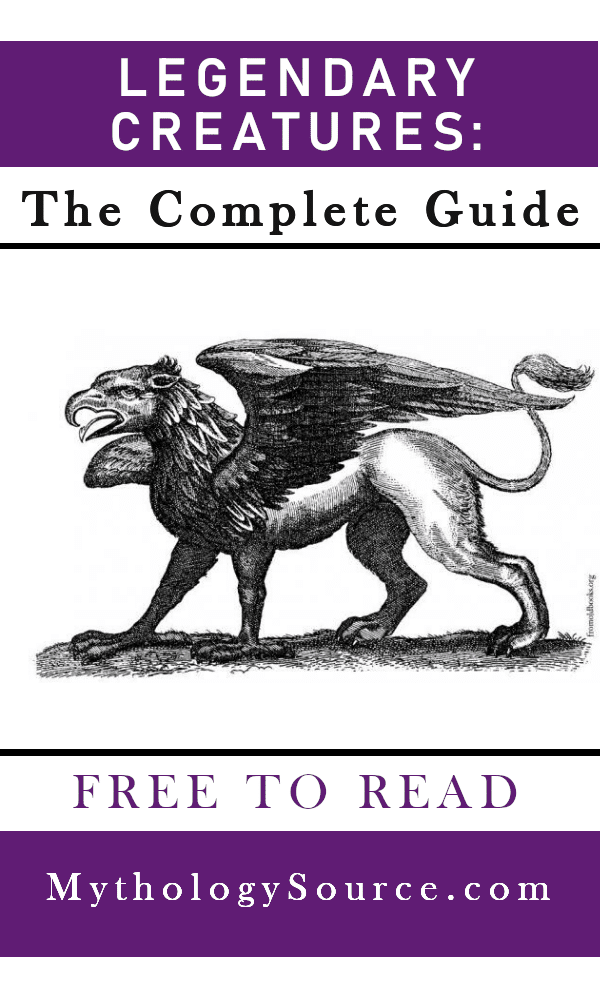
Greek
Legendary Creatures of Greek Mythology
Legendary Creatures of Greek Mythology
Monsters and gods feature heavily in Greek mythology, but the amazing creatures did not stop there! Greek mythology was full of legendary creatures of all types!
The Greeks, like many ancient cultures, believed that the world was filled with amazing creatures that were rarely seen by man.
A few of these beasts were strictly imaginary, but many more were influenced by the Greek people’s understanding of far away lands.
They were familiar with the animals of their own region and those of their closest neighbors. Often, legendary animals had forms that were quite familiar to Greek audiences but exaggerated in strength, size, or ferocity.
Many legendary creatures of Greek mythology were more exotic, however. Imaginative writers took what they had heard about far away places like Africa and Asia and created the animals they assumed lived there.
The sea was another unexplored place that was supposedly full of fantastical life. Glimpses of whales and other rarely-seen creatures were exaggerated into enormous monsters of the deep.
While a few legendary creatures feature in popular myths, many more were mentioned only occasionally in descriptions of the wider world.
Read on to learn about many of the legendary creatures the Greeks believed existed around them!
Legendary Dragons and Serpents
Like many cultures, the Greeks incorporated dragons and other types of serpents into their mythology.
Often, serpentine features were a sign of evil or monstrousness. The fire-breathing giant Typhon, for example, was said to have snakes around his waist and in place of his fingers.
While snakes could be monstrous, like the legendary Python that guarded the oracle of Delphi before Apollo’s birth, there were many other serpentine creatures in Greek mythology.
A similar serpent was said to have guarded the sacred spring of Ares near Thebes. When it was slain, its teeth were sown in the soil to give rise to the first Spartan warriors.
The Amphisbaena, for example, was a particularly unusual serpent said to live in Libya. It had two heads, one at each end of its body, so it could travel forwards or backwards with equal ease.
The Basilisk, a familiar creature in many modern stories, was a giant serpent with a deadly touch a poisonous breath. Later medieval artists imagined it as having features of both a bird and a snake.
The winged serpents of Arabia were covered in feathers. They were said to guard the frankincense groves of the region against theft.
An entire race of enormous vipers were born from the blood that dripped from Medusa’s head. They lived in the deserts of North Africa, threatening anyone who dared to walk through the region with venom and fangs.
Demeter even made a familiar from a feared giant serpent. A huge snake or dragon that once terrorised the island of Salamis became, according to some accounts, a companion to the goddess of grain.
Many countries had their own particular breeds of giant serpents or dragons. Ethiopia, India, and Phrygia were all said to have unique varieties of snakes, from those so large they preyed on elephants to leaping serpents that feasted on birds.
Other dragons were famous in Greek mythology. The Colchian Dragon, for example, was the guardian of the Golden Fleece.
Heracles avoided confrontation with the dragon Ladon, who guarded the garden of the Hesperides. With one hundred heads, it would have made a fearsome opponent for the great hero.
The Seven Against Thebes killed a dragon there. It was meant to guard the sacred forest of Zeus, but had eaten the infant son of a local king.
Such dragons often guarded groves. Artemis had one in Mysia, for example.
Some similar creatures were not properly considered serpents at all. The rivers of India were said to be inhabited by carnivorous worms large enough to eat a man.
The Horses and Steeds of Greek Legend
Arguably the most famous horse in Greek mythology was Pegasus. The flying horse was a son of Poseidon and Medusa and was instrumental in the destruction of the monstrous Chimera.
Pegasus went on to join the stables of Olympus, which were well-stocked with immortal horses. Many of these were children of Poseidon, who as the creator of the species often took the form of a stallion.
Monoceratus was the Greek term for “single horned.” This legendary horse of India was the inspiration for the popular image of the unicorn.
The Monocentaurs were an African variation on the well-known Greek hybrid. Instead of having the bodies of horses, however, this type of Centaur had the body of an ass.
One of the most famous horse-like creatures of Greek mythology were the Centaurs. Half-mand and half-horse, they were known both for their intelligence and their lasciviousness.
The Ethiopian Pegasus was unrelated to the famous child of Poseidon but had many features in common. Its main distinction was the presence of long horns on top of its head.
While horse-drawn chariots were the norm, some gods and goddesses used more exotic animals to pull their vehicles. Artemis, for example, was pulled by a team of silver stags.
The witch Medea and the goddess Demeter shared an unusual taste in chariot animals. Both were pulled by teams of dragons.
There were also several stories of carnivorous horses that got their strength from eating the flesh of men. King Glaucus, for example, was devoured by his own horses who he had trained in such a way to get an advantage in prestigious chariot races.
Legendary Bulls and Boars
Bulls played an important role in Greece mythology. This was largely due to the influence of ancient Minoan culture, which artwork suggests held bulls in high regard.
The Cretan Bull was probably inspired by this artwork. It was sent as a gift to King Minos of Crete, but when he proved unworthy was used instead to create the monstrous Minotaur.
Heracles was eventually sent to capture the bull, but made the mistake of setting it loose on the mainland. It was eventually killed by Theseus.
The Ethiopian bulls were enormous red beasts whose hides were impervious to most weapons. They were carnivorous and had a particular taste for human flesh, but were most likely derived from second-hand accounts of common water buffalo.
The Catoblepas was another bull-like creature said to live in Africa. It normally faced down, but when it looked up its noxious breath could kill a man in moments.
Inspired by dangerous wild boars, more monstrous boars made many appearances in mythology.
The Calydonian Boar was one of the most famous. It replicated the destruction caused by a typical wild boar, but on an enormous scale.
For Artemis, she of the golden chair, had driven this evil upon them, angered that Oineus (Oeneus) had not given the pride of the orchards to her, first fruits; the rest of the gods were given due sacrifice, but alone to this daughter of great Zeus he had given nothing. He had forgotten, or had not thought, in his hard delusion, and in wrath at his whole mighty line the Lady of Arrows sent upon them the fierce wild Boar with the shining teeth, who after the way of his kind did much evil to the orchards of Oineus. For he ripped up whole tall trees from the ground and scattered them headlong roots and all, even to the very flowers of the orchard.
-Homer, Iliad 9. 543 ff (trans. Lattimore)
Heracles faced a similarly destructive boar as one of his twelve labors. The Erymanthian Boar was so terrifying that Eurystheus refused to even look at it.
Occasionally, the terrible pigs of Greek legend could even fly. One later account told of the Clazomenean Sow, who ravaged a town in Ionia from the air.
The Fantastical Creatures of Pliny the Elder
The writings of Pliny the Elder contained some of the most amazing and imaginative beasts known to the Greek world. While many other legendary beasts closely resembled common animals, the creatures described by Pliny the Elder were shockingly different.

It’s not clear how many people in the Greek world believed that these were literal descriptions of existing animals, but they reflected the bizarre creatures seen far from the lands of Greece.
The writings of Pliny the Elder continued to be popular for centuries. Medieval artists turned to them to create amazing bestiaries of creatures, both human-like and animal, that they believed existed in the far corners of the world.
Over a thousand years after Pliny the Elder wrote his accounts of the beasts of Africa and Asia, their images were still used to illustrate what was believed about those lands.
Some of the amazing creatures described by Pinty the Elder included:
- The Leucrocotta was probably inspired by accounts of hyenas in Africa, but had the body of a stag, the head of a lion, cloven hooves like a goat, and a bony ridge in place of teeth. It used a human voice to lure its prey.
- The Yale was inspired by another African animal, the antelope. It was the size of a hippopotamus, however, and had rotating horns.
- The Manticore was a fearsome hybrid creature adopted from Persian lore. The human-faced beast was able to shoot poisoned arrows from its spiked tail.
- Pliny wrote of several species of Satyr native to Africa that had the features of monkeys or apes instead of men.
- The Ethiopian Sphinx was distinct from its monstrous Greek namesake. With the head of a woman and the body of a beast, modern historians sometimes interpret it as a description of a baboon.
Legendary Sea Creatures of Greek Mythology
The seas were a place of mystery for the Greeks. While much of their culture was based around the Mediterranean, they still had little understanding of what lay below the waves.
The dark depths of the sea could hold any number of creatures that humans would never be aware of. Often these were imagined as terrifying monsters.
Real animals could also be misconstrued as legendary creatures. Infrequent sightings of whales gave rise to all manner of enormous, violent beasts.
The Cetai were famous monsters of Greek mythology. Enormous beasts were often sent, along with floods, against those who offended Poseidon.
They were usually named for the place they appeared. The Aethiopian Cetus, for example, was sent against Aethiopia and was about to devour the princess Andromeda until it was slain by Perseus.
A similar monster attacked Troy. This time, the princess in peril was rescued by Heracles.
Troy was actually attacked by Poseidon’s monsters twice. When Laocoon tried to warn his people against accepting the Trojan Horse, Poseidon sent two smaller sea serpents to kill him and his sons.
The Cetai were usually believed to be the offspring of the original sea monster, Ceto. She was also the mother of Echidna, who spawned many of the other great monsters of Greek legend.
Entire groups of cetai were said to inhabit the waters off the coast of India. They often had the front parts of land animals, including exotic creatures like leopards, and the tails of fish.
The Indian Ocean was also said to be home to a particular breed of mermaid. It had the common torso and head of a woman with a fish tail, but had sharp spines in place of flowing hair.
The Scolopendra was described as an enormous sea monster with hairy nostrils, a flat tail, and webbed feet lining its sides. Most historians interpret this as a description of a baleen whale.
The Tanagran Triton should not be confused with the similarly-named sea god. It was a true monster with sharp teeth, red eyes, and scaly skin.
The Hippocampoi were frequently pictured alongside the god Poseidon. Literal sea horses, they had equine bodies with the rear ends of fish.
Birds and Flying Creatures
Legendary creatures were not limited to the land and sea. The air could also hold amazing creatures.
One of the most famous legendary birds of ancient mythology was the Phoenix. The beautiful creature lived for five hundred years, and when it died it burst into flames and was reborn from the ashes.
The Griffon combined the wings of a giant eagle with the body of a lion. They were said to be guardians of mountain passes and were a popular figure in ancient Greek art.
The Caucasian Eagle was the famous bird that tortured the Titan Prometheus. The bird came each day at dawn to rip the Titan’s liver from his body until it was slain by Heracles.
Ares was associated with several types of vicious birds. The Stymphalian birds that were driven away by Heracles, for example, were raucous man-eating creatures that were sacred to the god of war.
He also had another flock that guarded his shrine among the Amazons. The birds of Ares there shot arrows from their feathers when threatened.
Many of the monstrous creatures of mythology were also said to be related to birds. The Sirens, Harpies, and Furies all had bird-like features.
The Many Legendary Creatures of Ancient Greece
As you can see, there were many legendary creatures in Greek mythology and folklore.
Many legendary creatures were exaggerations of well-known forms. Often, these gave a challenge to heroes that was both familiar and frightening.
Among these were horses, bulls, and boars. Snakes, a common sight for many people, became enormous serpents or dragons.
Other legendary creatures were said to exist in far away countries. Africa, in particular, was known to be home to many animals that were unrecognizable to most Greeks.
Greek writers took the vague descriptions they got of such creatures and expanded upon them, creating forms that were fantastical but can often be recognized as inspired by fact.
Many sea monsters, for example, were based on brief sightings of whales by frightened sailors. The animals of Africa can often be vaguely recognized, although their attributes were distorted in Greek descriptions.
Many of these legendary creatures lived on for thousands of years after the Greeks first thought of them. The beasts imagined by Pliny the Elder were popular in medieval manuscripts, while even today the unicorn and Pegasus feature in media aimed at children.




